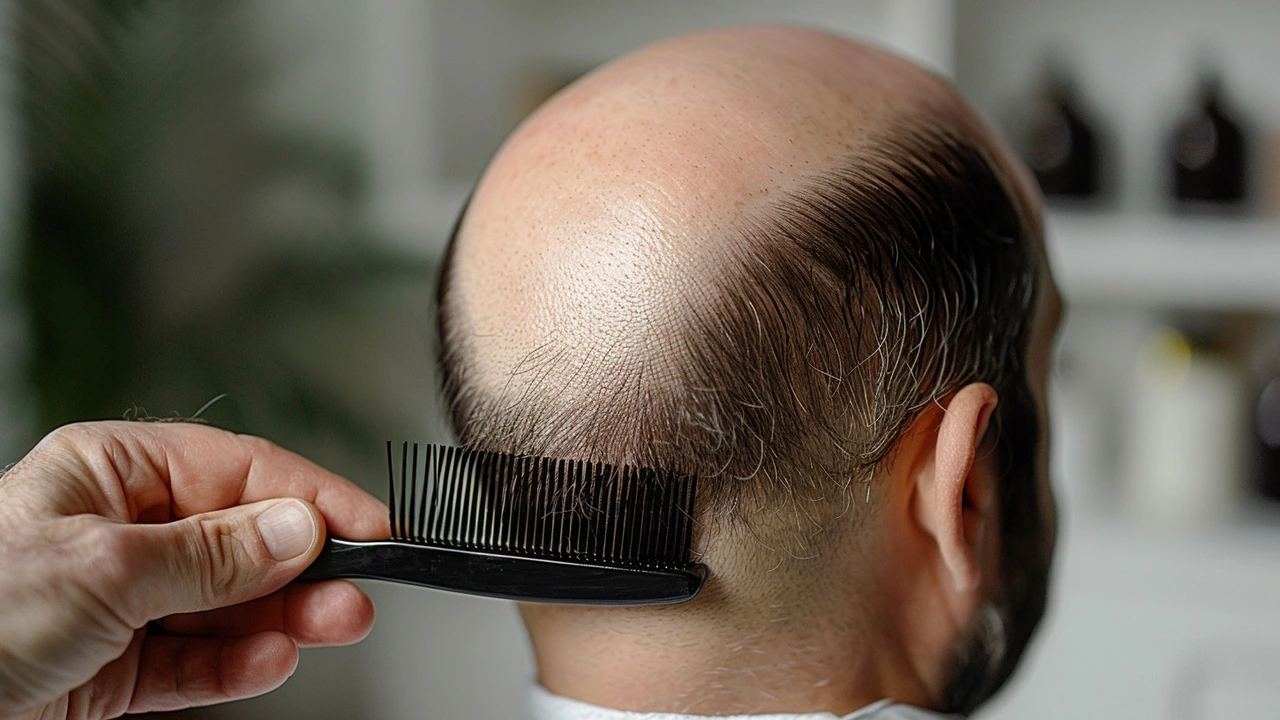Finasteride: What it does and who should take it
Finasteride is a pill most doctors prescribe for male pattern hair loss (branded as Propecia at 1 mg) and, at higher doses, for benign prostate enlargement (Proscar at 5 mg). It works by blocking the enzyme 5-alpha-reductase, which turns testosterone into DHT — the hormone that shrinks hair follicles. For many men this slows hair loss and can lead to modest regrowth, but results take time and the drug must be taken every day to keep working.
How finasteride works and what to expect
You usually need at least 3–6 months to notice less shedding and closer to 12 months to see thicker hair. If you stop, hair loss typically resumes within a year. Best results happen when you start early, while hair is thinning but not completely gone. Finasteride is not approved for women of childbearing age — handling crushed or broken tablets during pregnancy can harm a male fetus.
Before starting, talk with a clinician about realistic goals. If you want fuller coverage or have long-standing bald patches, finasteride may slow progression but may not fully restore lost hair. Many people use finasteride together with topical minoxidil or hair transplant procedures for better results.
Side effects, safety checks, and alternatives
Common side effects include decreased libido, erectile difficulties, and lower semen volume. Most side effects are reversible after stopping the drug, but some users report persistent problems; if you notice mood changes or sexual issues, contact your doctor. Finasteride lowers PSA (a prostate screening marker), so mention finasteride use before prostate tests — doctors often adjust PSA interpretation.
Alternatives if you don’t want finasteride: topical minoxidil (applied daily), low-level laser devices, hair transplant surgery, and stronger drugs like dutasteride (used off-label for hair loss but not approved everywhere). Some newer topical finasteride formulas aim to reduce systemic exposure, but talk to your doctor about safety and evidence before switching.
Buying finasteride: you need a prescription. Use a licensed pharmacy or a reputable online pharmacy that asks for a prescription. Avoid suspicious discount sites that skip medical checks — our site has guides on safe online pharmacies and ways to compare cost-saving options while staying legal and safe.
Starting finasteride usually involves a short medical check: a health history, discussion of risks, and sometimes a baseline PSA if you’re over 40. Track progress with photos every few months and re-evaluate with your clinician after about a year. Stickiness matters: taking it consistently is the single biggest factor for success.
If you want help deciding, bring notes on your hair loss timeline, family history, and any sexual or mood concerns to your appointment. That makes the conversation faster and helps your clinician recommend the right path — finasteride, an alternative, or a combination approach tailored to your goals.

Finasteride's Broader Impact: Beyond Hair Loss to Prostate Cancer Prevention
A groundbreaking study by Harvard Medical School indicates finasteride, a drug primarily used for treating male pattern baldness, may also substantially reduce prostate cancer risk among men. This discovery hints at significant health advantages beyond mere hair regeneration.
- Health and Wellness (58)
- Drug Information (45)
- Pharmacy Information (19)
- Medical Conditions (17)
- Supplements (4)
- Diabetes (3)
- Travel Health (2)
- Parenting (2)
- Mental Health (2)
- Heart Health (1)
-
Experience the Healing Wonders of Artemisia Herba-Alba: Your New Go-To Dietary Supplement
12 Jun 2023 -
Mail-Order Pharmacy Safety: How Temperature, Timing, and Tracking Keep Your Medications Safe
1 Dec 2025 -
Delayed Medication Side Effects: Recognizing Late-Onset Adverse Reactions
18 Nov 2025 -
AI and Pharmacogenomics: How Personalized Generic Recommendations Are Changing Online Pharmacies
15 Dec 2025 -
Compare Emulgel (Diclofenac) with Top Alternatives for Pain Relief
30 Oct 2025

22.03.24
Alistair Mukondiwa
16